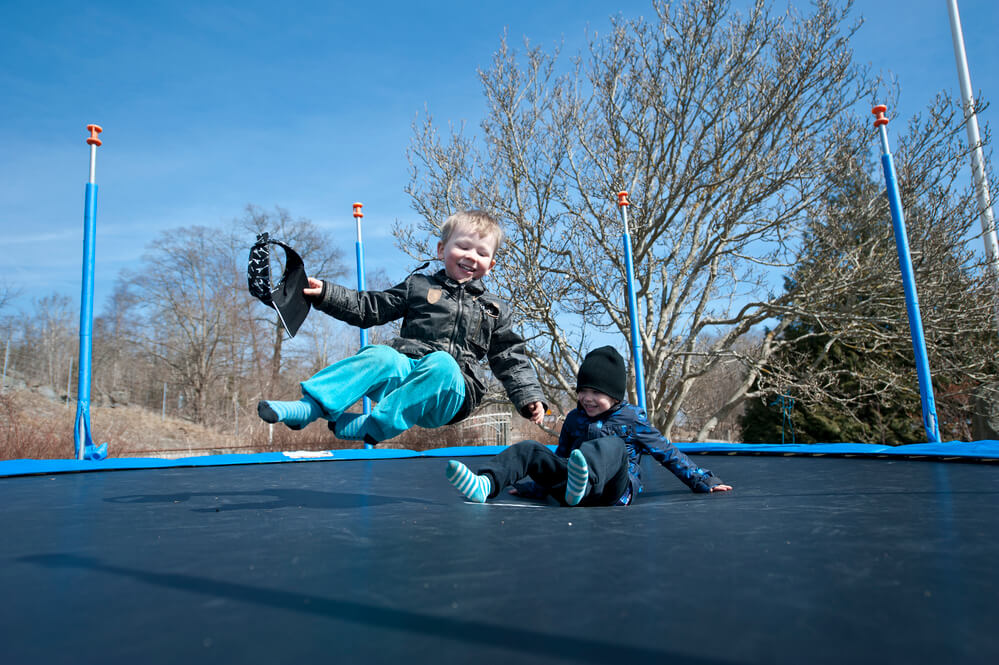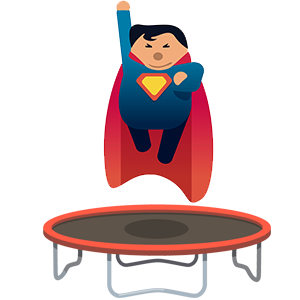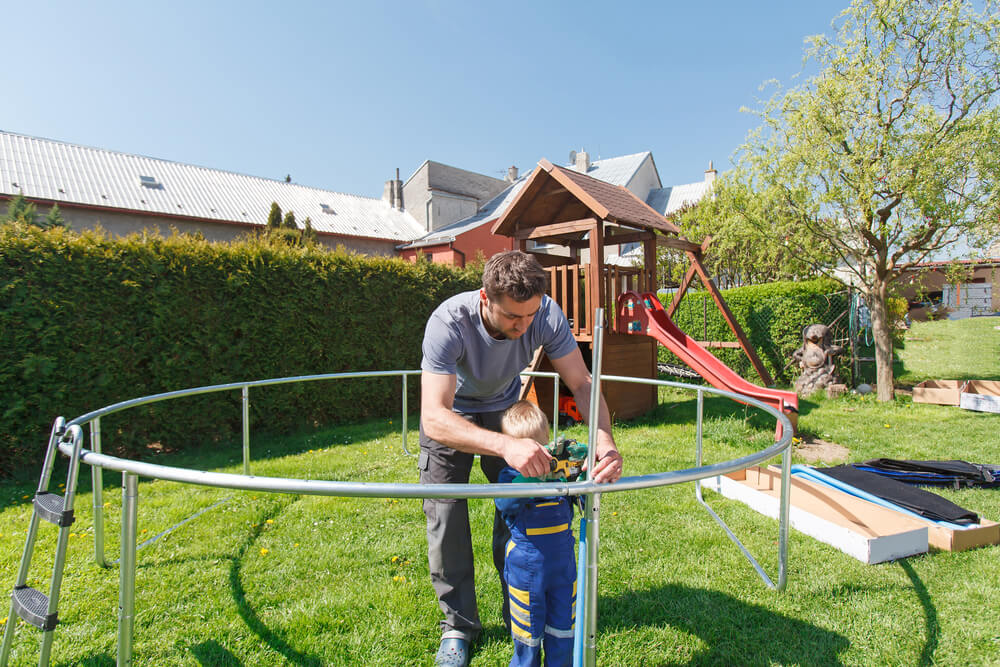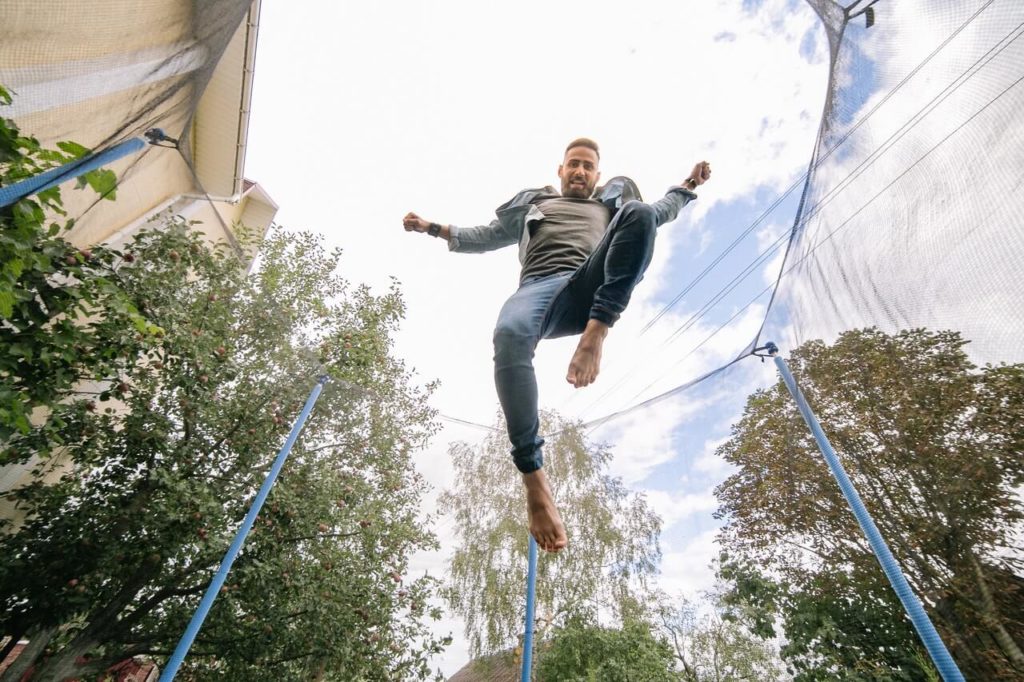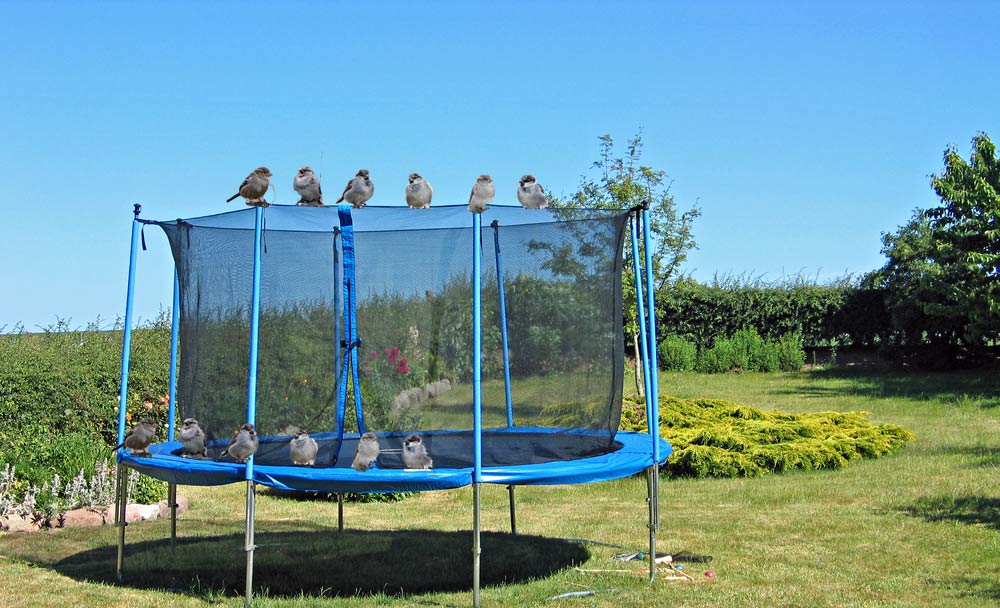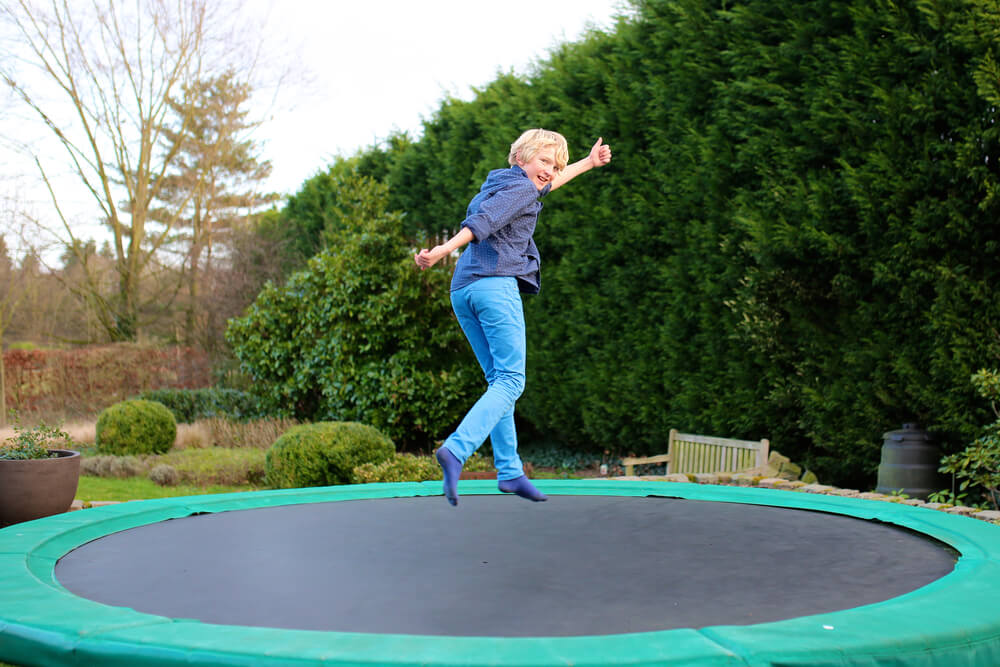Picture this, you and your family are out in the woods having fun and bonding as a family. Nighttime approaches and the kids are tired. Will you need to come up with a makeshift bed? No need to think too much. I will show you how to make a DIY trampoline sleepover.
A little creativity and ideas will go a big way in creating a trampoline sleepover. A trampoline sleepover is elevated off the ground; hence, kids won’t be disturbed by crawling insects and small animals like worms and rats.
Below I will highlight how you can pitch a DIY trampoline sleepover, sleepover activities that you may find interesting, and activities that the kids may take part in the trampoline sleepover.
Ways of How to Make Diy Trampoline Sleepover (With Additional Decorations & Aesthetics)
You need not find an expert to make a trampoline sleepover for you or your kids. You can do it yourself!
You can set it up easily using common household items in your house. They include:
1. Blankets
You should have a lot of supplies of blankets when you want to make a trampoline sleepover. They will come in handy on the active part of the trampoline by layering the area with more blankets and duvets to make it a comfortable and fluffy area to sleep on.
2. Bedsheets
To create a fort around your sleeping area of the trampoline, you may need bedsheets. They will help in creating an enclosure and fort around the trampoline.
Using safety pins to form a tent-like mounting around the trampoline, you can stitch them together. A canopy curtain is also a very good substitute for the same purpose.
3. Sleeping bags
Sleeping bags are very important, especially if the weather is super chilly. They also help a lot if it rains, where a waterproof bag will greatly help in such a scenario.
4. Cushions
Cushions or pillows will aid in creating comfort inside the trampoline when sleeping, watching a movie, or scrolling through your laptop.
5. Trampoline lights
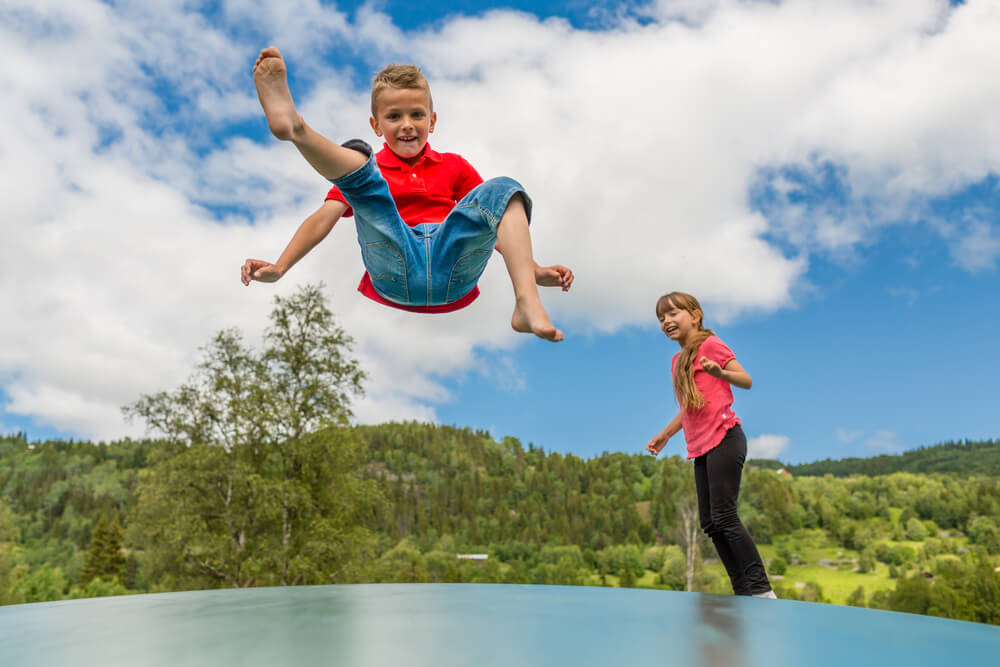
To add some aesthetic touch to the trampoline sleepover, You should add cool lights on the top or sides of the trampoline.
Across the sides of the trampoline, you can place twinkle lights to provide light and elegance in the trampoline.
6. Torchlight
Sleeping over in the woods or a backyard somewhere means very dark surroundings. So it is wise to have an additional form of light like a torch in case of any emergency or a nature call.
The torch will act vision enabler outside of the trampoline for security purposes and ease of navigation outside of the trampoline.
7. Bug spray
Bugs are always common in the woods or backyard, where you may opt to make a DIY trampoline sleepover. If bugs and insects become a menace or are harmful, you will need a bug spray to deal with such an occurrence.
How to Make a Swing Trampoline Sleepover Bed
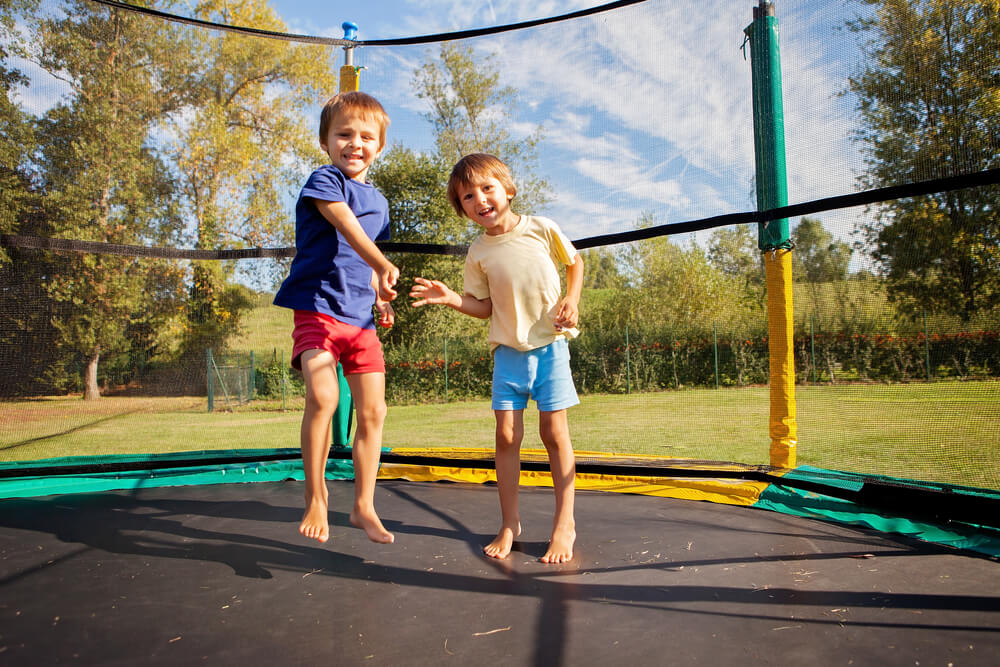
You may decide to add an aesthetic touch or creativity to the making of your trampoline sleepover with a trampoline swing bed.
It is not rocket science; you only require an old trampoline and a few cushioning. Below I highlight the steps you may follow to make a swing trampoline.
1. You should start by disengaging the poles, safety net, and supporting legs off the trampoline. Leave the mat, springs, and frame intact.
2. Using pool noodles, cover the frame made of steel to minimize impact. To achieve that, you should cut down the half side of the pool noodles and attach them to the frame.
3. Using robust ropes to hold the weight of the swing, make knots of the legs of the trampoline.
4. After doing all the above, you should hang the swing bed from a pergola or swing frame.
5. Lastly, you should cover the frame and springs with thick padding and cushion the swing trampoline sleepover bed with pillows, blankets, canopy curtains, and bedsheets.
Risks Involved in Making Diy Trampoline Sleepover (Plus Safety Measures to Counter the Risks)
It is prudent to know the few risks possible when making a trampoline sleepover to make informed decisions when you start making one. Below are some of them.
1. Flying Off

Falling off a trampoline is a risk because of its elevation from the ground, especially for a young kid. While playing on the trampoline, there is the risk of falling off and potentially hitting a blunt or sharp object on the ground.
To avoid such a risk, you should ensure you properly fortify your trampoline and use a safety net.
2. Bottoming Out
The bottom-out is when the trampoline is too low such that when you are bouncing or playing on the trampoline, you end up hitting the ground underneath the bouncing surface.
Always ensure the trampoline is raised above the surface to avoid such an occurrence.
3. Springs
The springs holding the bouncy surface on the trampoline may sometimes inure or pinch kids when playing or sleeping on the trampoline. What happens if there is no proper cover surrounding the trampoline perimeter.
To avoid such a scenario, you should ensure that the trampoline springs are properly and adequately covered or go for a spring-less model.
4. Knocking on the Frame
There is the risk of hitting on the frame of a trampoline when the perimeter surface is not properly padded.
To ensure such a scenario doesn’t occur, ensure the padding is done excellently.
Frequently Asked Questions
1. How Safe are Trampolines?
If you don’t pay attention to safety measures when making a DIY trampoline or any other trampoline, it may cause several injuries here and there.
You should ensure your trampoline is well fortified by either bedsheet, canopy curtains, or the safest option, which is a safety net.
Also, even when making a DIY trampoline, it’s prudent to research how to make it to get in touch with the basic safety measures.
2. What is the Appropriate Age for kids to Use a trampoline?
It is wise to allow only six-year-olds and above kids to use a trampoline for whatever purpose. According to American orthopedic specialists, that is because, below six years, kids’ bones aren’t fully developed and easily get fractured.
Below six years old, kids’ brains, organs, and spines are not fully developed and strong enough to handle heavy landings and possible collision of heads when playing on the trampoline; hence as a responsible parent, you should take age very seriously when considering a trampoline for your kids.
3. Can a Trampoline Act as an Exercising Tool?
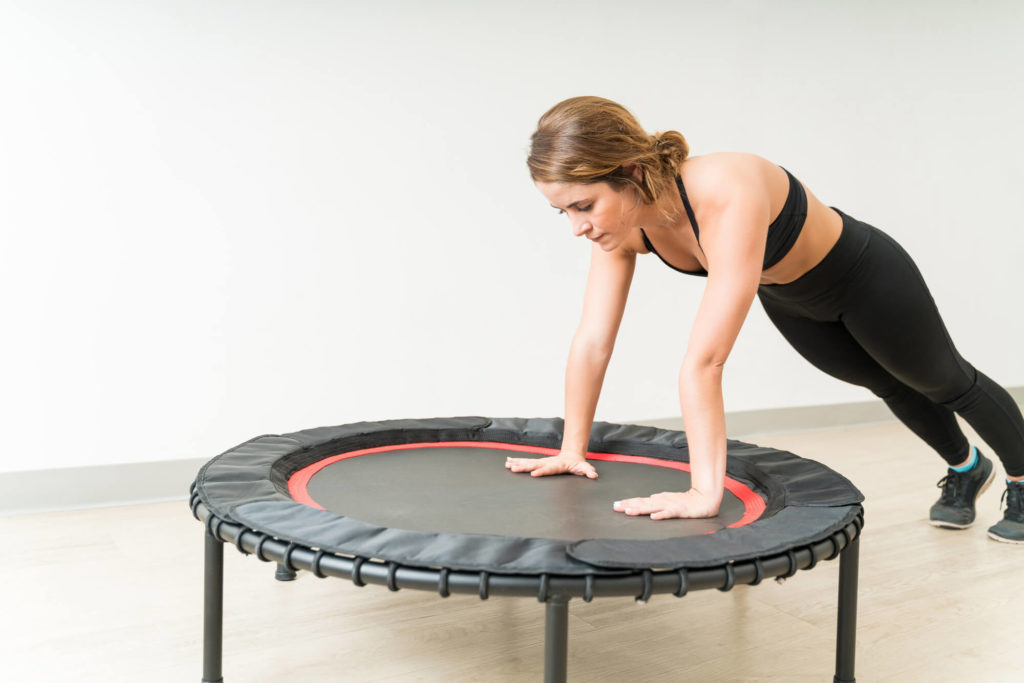
You get to exercise your whole body when you jump on a trampoline. Bouncing on the trampoline may help you tighten your muscles and burn calories, making you leaner.
But you can lose weight bouncing on a trampoline only if you do it consistently for like 40 minutes a day.
4. What is the Price of a Trampoline?
The price of a trampoline may vary depending on the quality, size, and brand or model of the trampoline. High-end trampolines are expensive and may go for 1,500 dollars, whereas the common generic ones can range from 400 to 800 dollars.
5. How do I recycle or Get Rid of Old Trampoline?
You can put into good use an old trampoline for several purposes. They include:
a. Trampoline mat
You can use the mat from an old trampoline to make environmentally-friendly shopping bags when properly sewn up.
It can also be used as an exercise mat if you cut it to your desired size.
You may also use it as a patio shade by fastening the mat to the patio post.
You can also convert a trampoline mat into a diving board. That is possible by disengaging the trampoline legs and remaining with the mat and its perimeter frame. You should ensure it has a few hollow areas under the mat to create that bounce effect as you use it on a swimming pool or pond.
b. Old Trampoline Springs
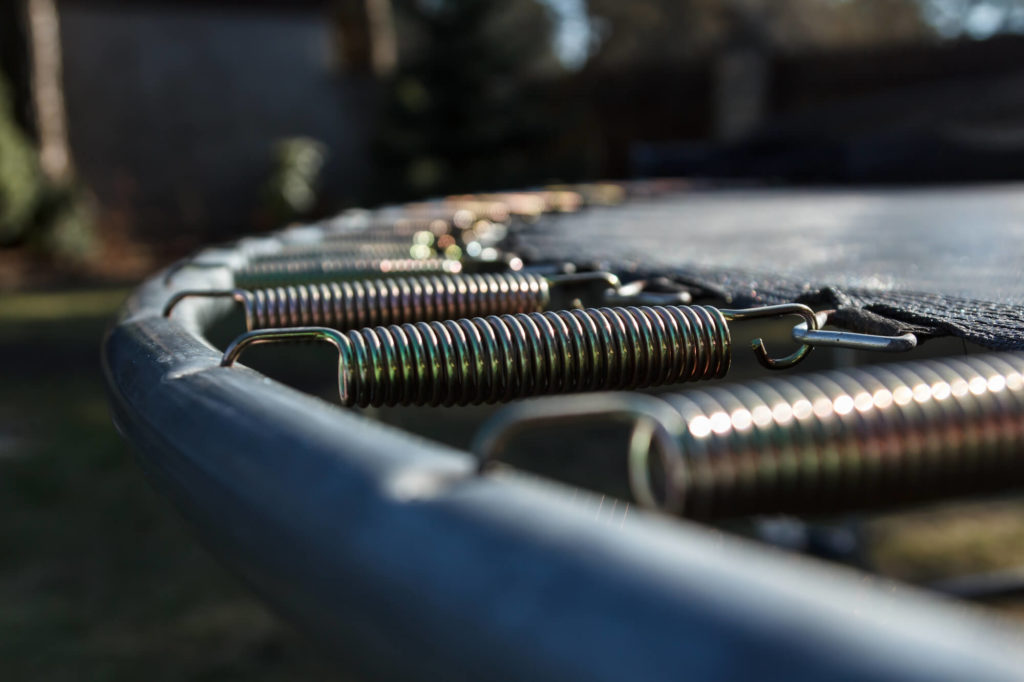
Trampoline springs can also hang plants and small pots in the backyard of your house or the front.
You can also use the springs indoors to hang decorations off the ceiling.
c. Trampoline Net
One can use an old trampoline net to cover a small soccer goalpost.
You can also use a garden fence to prevent small animals from accessing your small garden. That will reduce the menace of pests and rodents.
It can also be a window shade to prevent unwanted pets from accessing your house.
d. Trampoline Poles
You may opt to use trampoline poles to create a swing stand. You just need six trampoline frames and proper attachment of the frames to create an A shape, and you have made a swing stand.
Conclusion
As I have highlighted above, making a DIY trampoline sleepover is not rocket engineering. You only need a few basic household materials and a few tools, and you are good to go!
But you should ensure you consider the safety measures I have highlighted when embarking on making a trampoline to avoid unnecessary injuries.
Lastly, if your trampoline becomes old or you wish not to use it anymore, instead of throwing it away, you can recycle it to serve various purposes, as highlighted above, or sell it as scrap.

